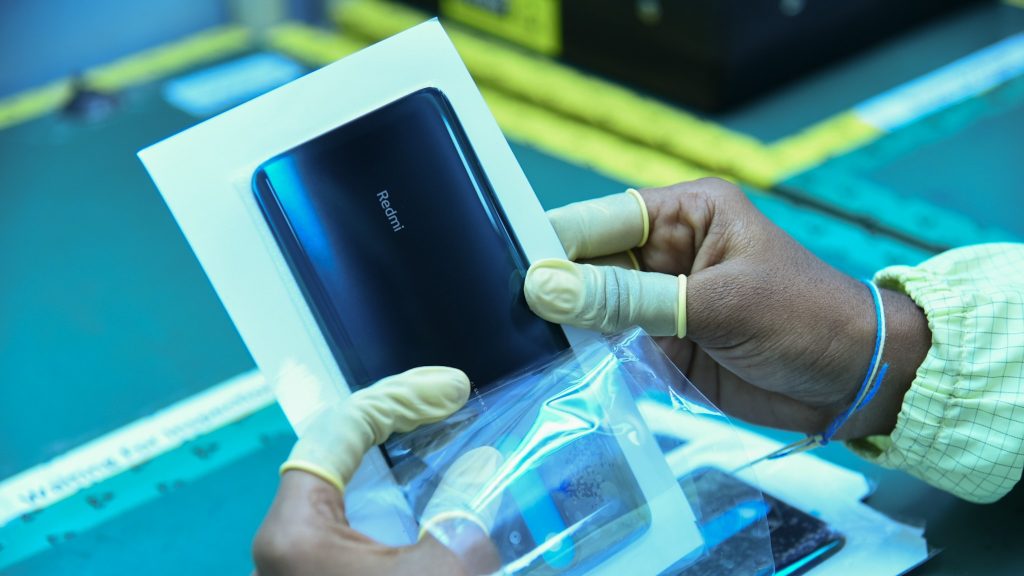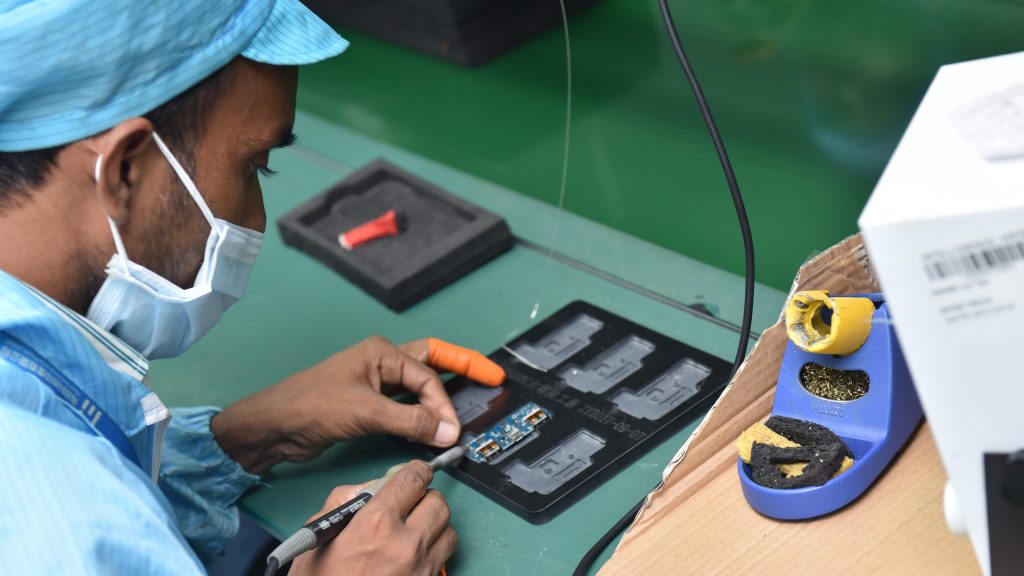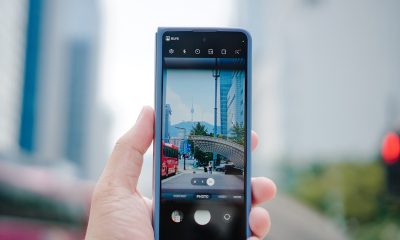Enterprise
Xiaomi announces three new manufacturing plants in India
Two for smartphones and one for smart TVs

Xiaomi announced it’ll be opening three new manufacturing facilities in India to boost its local presence and supply chain. Two of them shall be dedicated to smartphones while the third ones for smart TVs.
Xiaomi’s India Head and Global Vice President, Manu Kumar Jain, said that 99 percent of its smartphones sold in India and 100 percent of its televisions will now be manufactured within the country.
In a briefing to GadgetMatch, he said that Xiaomi has been assembling phones and TVs in India for a while now. But many components are still imported, and the company is trying to reduce this as much as possible. Xiaomi has partnered with DBG India, and its plant in Haryana is already functional.
The second facility will be set up in Tamil Nadu by Chinese electronics maker BYD. The two plants are strategically located to ensure the supply chain runs smoothly across the country. For the smart TVs, Xiaomi has tied up with Hyderabad-based television manufacturer Radiant.
The Chinese phone maker has already tied up with Foxconn and Flex for smartphones and Dixon Technologies for televisions. Jain even went on to say that a vast majority of the phone components that include printed circuit board assembly (PCBA) and sub-boards, chargers and battery, back panels are domestically manufactured in the country.
Jain also proudly said in the briefing that Xiaomi now employs 60,000 people in India via its many facilities, retail units, and back-end operations. Xiaomi’s investment in India isn’t surprising because it has been serious about the market for years and has solidified its standing as an indisputable leader.
The Indian government recently kicked-off a billion-dollar scheme to encourage local sourcing. Also dubbed Production Linked Incentive (PLI), the government is ready to offer subsidies and tariff reliefs for companies that are open to localization. The program has worked wonders for companies on the electronics front, and thousands of jobs are being generated.
Despite competition from Samsung, realme, OPPO, and vivo, the company has largely remained unscathed. However, the brand is still in warm waters due to geopolitical instability between India and China. The anti-China sentiment has affected many Chinese players like Huawei, TikTok, Alibaba, and more. But Xiaomi and other mobile phone markers have avoided controversy by amalgamating with the local market and the workforce.


Launching your own smartphone company takes guts. Now, creating a sub-brand so soon after launching a new company takes a more enormous amount of confidence. However, if it’s confidence we’re talking about, OnePlus co-founder Carl Pei has that in spades. Only a few years since launching Nothing, the entrepreneur is now building a sub-brand called “CMF by Nothing.”
After announcing his departure from OnePlus, Pei quickly created his next venture called Nothing. Despite the name, Nothing offers something a lot more unique than standard smartphone fare. The company thrives on releasing devices with notable designs and hardware. The company already offers a fairly healthy lineup of smartphones and earbuds.
Now, Nothing has its sights set on another segment. Today, Pei has announced that CMF by Nothing will cater to a different market. It means “Color, Material, and Finish.” Color is certainly something different for Nothing, which releases products using more monochromatic profiles.
Instead of design innovation, CMF by Nothing will focus on “clean design.” It will also focus on accessibility and trusted quality. Given the scant descriptions, the sub-brand will likely offer more traditional devices.
Pei hasn’t announced much else about the new brand itself. However, he did reveal that the first products from the brand will be a pair of earbuds and a smartwatch coming later this year.
SEE ALSO: Nothing Phone (2) Review

Every major smartphone brand has a color or color combination associated with it. Samsung has blue; Xiaomi has orange; and OPPO has green. However, things are about to change for the green brand. OPPO is slowly draining its branding of all things green.
Most users will likely pass over the changed branding. OPPO hasn’t technically announced a major change explicitly. Instead, the company gradually started changing the branding’s colors in all of its channels. According to IThome, users in China, however, noticed the change through the company’s official website, which recently switched from a green logo to a monochromatic one.
In response, OPPO confirmed the gradual transition. In the future, the company’s branding will no longer have any color. In the meantime, it will still incorporate the traditional green in some channels and in “interactive visual designs.” Green isn’t going away entirely yet.
Now, the change shouldn’t affect a lot of users. Prior to confirming the transition, OPPO already removed green from a lot of accounts. A lot of them are using the logo in white font on a black background.
It’s quite a change for the company. Since its early days, the brand swirled around its colorful white-and-green color combination. Now, the company is gunning for something more premium-looking with a monochromatic look.
SEE ALSO: OPPO Reno10 series: Price, availability in the Philippines
Automotive
Ford Philippines’s retail performance rose to 55 Percent for H1 2023
Next-Generation models are at play
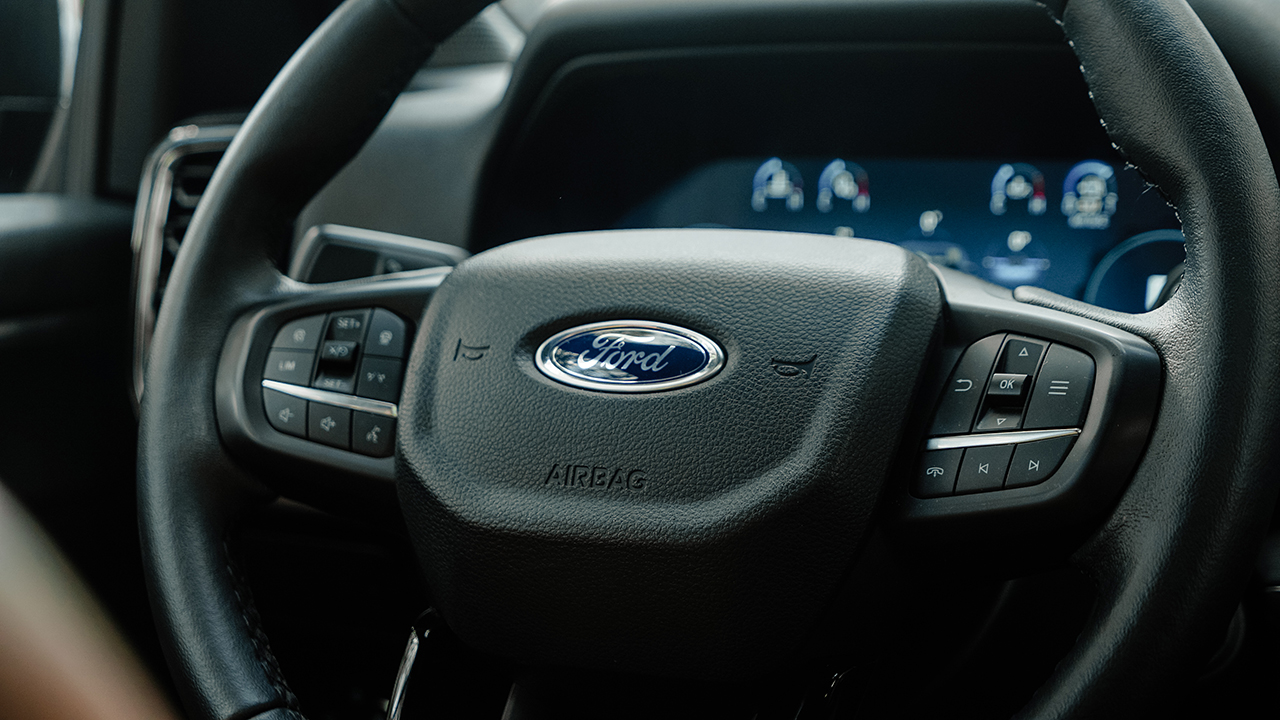
Way to go, Ford!
The automotive company delivered a strong retail performance for the first half of the year in the Philippines. Thanks to its Next-Generation vehicle lineup, Ford Philippines’s retail sales rose 55 percent from a year ago to 13,838 vehicles.
The Next-Generation Ranger became Ford’s top-selling vehicle in the country, with sales growing by 25 percent year-on-year to 5,436 units sold. The addition of the Next-Generation Ranger Raptor also boosted retail performance, with sales reaching close to 600 units since its launch in late May.
Furthermore, the newly-launched Next-Generation Territory contributed to Ford’s strong sales as well. Like its predecessors, it’s still the leading small SUV in the Philippines, with sales increasing by 22 percent to 4,493 units. The Next-Gen model also breached the 2,500-unit mark in less than three months after its launch at the Manila International Auto Show.
Meanwhile, the Ford Everest continues to thrive in the competitive mid-size SUV segment. It delivered strong sales performance, growing by 503 percent from last year to 3,786 vehicles.
Enhanced ownership experiences
Ford is committed to improving the ownership experiences, giving the Next-Gen Ranger, Territory, and Everest with a five-year warranty. Moreover, Ford Philippines also introduced new service initiatives designed to provide ease and convenience in owning a Ford vehicle.
For instance, Express Service is offered to customers who prefer to have their vehicles serviced in a more efficient way than the usual maintenance. Pickup and Delivery, on another note, is available for those who are interested to have their vehicle serviced without interrupting their day. Participating dealers will pick-up the vehicle, service it, and bring it back to the customer’s preferred location.
“These milestones testify to our commitment to enhance the Ford ownership experience with vehicles and services that our customers need and deserve,” shares Mike Breen, managing director, Ford Philippines.
“We celebrate these milestones with our customers who continue to patronize the Ford brand, as well as with our dealers for their partnership and commitment to enhance the customer experience. We are truly energized and excited for what’s to come for the second half of the year.”
-
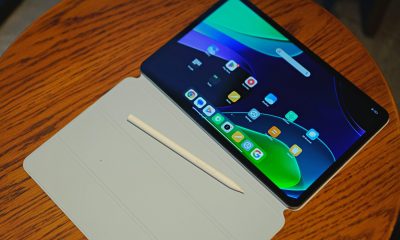
 Reviews2 weeks ago
Reviews2 weeks agoThe Xiaomi Pad 6 is great for the editor on-the-go
-

 Reviews2 weeks ago
Reviews2 weeks agoHONOR 90 review: Simply bedazzling
-

 Gaming2 weeks ago
Gaming2 weeks agoRefurbished Steam Decks are now available through Valve
-

 Health2 weeks ago
Health2 weeks agoRedmi Watch 3 Active: Basic but better
-

 Gaming2 weeks ago
Gaming2 weeks agoRockstar officially partners with Grand Theft Auto V roleplay servers
-

 Gaming2 weeks ago
Gaming2 weeks agoPlayStation 5 Slim supposedly leaked online
-

 Entertainment2 weeks ago
Entertainment2 weeks agoCatch Cinemalaya 2023 films at Ayala Malls this weekend
-

 Apps2 weeks ago
Apps2 weeks agoSpotify DJ feature now available in the Philippines

